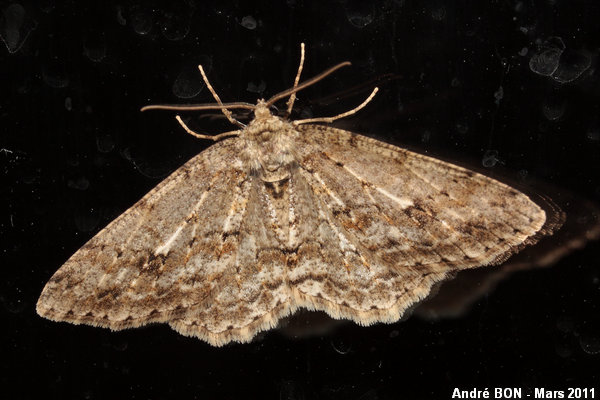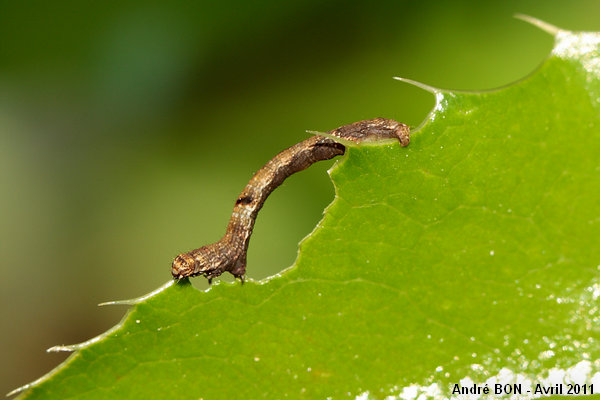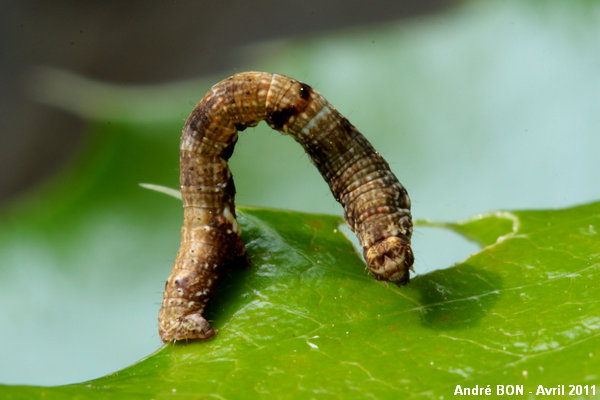


| Small Engrailed (Ectropis crepuscularia (Denis & Schiffermüller, 1775)) |



|
|
Scientific name: Ectropis crepuscularia (Denis & Schiffermüller, 1775) Common name: Small Engrailed Other names: Other scientific name: Ectropis bistortata. French name: Boarmie crépusculaire, Boarmie bi-ondulée. Order: Lepidoptera Suborder: Heterocera Family: Geometridae Subfamily: Ennominae Wingspan: 32 to 38 mm. Moths of the second brood are slightly smaller. Biotope: Woodlands, woodland edges, parks and gardens with trees. Geographic area: Nearctic region. Flight time: March to June then August to September. Number of generations : 2, only 1 in the northern part of its range. Caterpillar: Greyish and reddish brown with a dark diagonal dorsal ridge. The third segment is swollen on the lateral sides and the eleventh shows a small point on the upper side. The head is pale grey with darker markings. Host plant: Many deciduous trees including Oaks (Quercus sp.), Birches (Betula sp.), the Common Hornbeam (Carpinus betulus), Hawthorns (Crataegus sp.), etc. |
The ground colour of the Small Engrailed's wings vary from greyish brown to whitish brown. The wings are crossed by a blackish brown median line. The dark markings are less visible than on the Willow Beauty (Peribatodes rhomboidaria). The body shows a pale mark at the back of the head. It is followed by a darker mark. You can observe darker forms. The Small Engrailed over winters as a chrysalis. |
| [To know more about the Small Engrailed] [Next picture] [Top] |

|
Maybe attracted to light, this Small Engrailed has come to land on the window. |
| [To know more about the Small Engrailed] [Next picture] [Previous picture] [Top] |

|
Here is a typical position for a geometridae caterpillar. I am not very skilled in Botanic but I will have to find the name of this plant with holly-shaped leaves and yellow flowers which is growing in my garden. |
| [To know more about the Small Engrailed] [Previous picture] [Top] |

|
The third segment swollen on the lateral sides and the point on the upper side of the eleventh segment are clearly visible on this picture. |